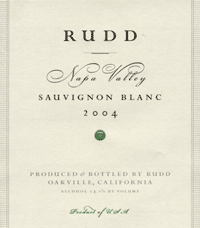 |
|
Wine Details
Price:
$35.00 per bottle
Description:
The 2004 growing season was the earliest in nearly 20 years. A dry, late winter ended with three warm spells – the first in late February, then in mid-March, and again in late April. This shifted the whole season – bud break, flowering, veraison and harvest – two to three weeks earlier than normal. The harvest began on August 12 and was completed over a sixteen-day period. The Oakville fruit was first, followed by Rutherford and finally the Semillon on August 28. Once harvested, the grapes were gently whole-cluster pressed, then gravity-fed to barrels in Rudd’s underground caves. Native yeasts were allowed to induce fermentation. This primary fermentation was completed in a combination of new and used French oak, concrete eggs, and stainless steel barrels. The concrete eggs, which are the first to be used in the United States, have added another dimension to our winemaking. Somewhat larger than a barrel, the porous concrete material gives the richness of an oak barrel fermentation, but with the varietal purity of a stainless steel barrel. The wine was stirred and topped monthly for seven months, then racked, fined and bottled without filtration in late May 2005. To ensure consistent excellence in every bottle, we bottled the 2004 Sauvignon Blanc with screw caps.
|
|
|